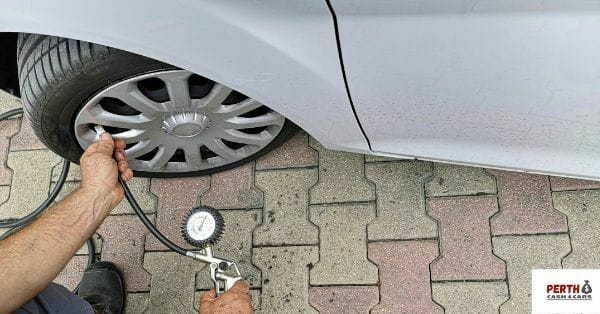We can expect the temperatures to slowly drop into the winter weather realm. But with dropping temperatures comes in increasing encouragement to stay current on your automotive tire maintenance throughout the season.
Continue reading to learn the importance of proper tire inflation, and the risks you take when you are driving around with underinflated or overinflated tires.
Tire Pressure Monitoring System (TPMS)
If your vehicle is a newer model, it most likely has an onboard tire pressure monitoring system (TPMS). The tire pressure monitoring system continuously supervises the air pressure in your tires and notifies you when a tire is experiencing inflation issues. Older model vehicles do not have TPMS technology, and instead must rely on manual tire gauges to routinely check tire pressure.
There are two types of tire pressure monitoring systems, indirect and direct. Indirect tire pressure monitoring systems supervise the number of revolutions a tire takes while driving, and direct tire pressure monitoring systems monitor air pressure levels through detection sensors in each tire.
The Risks Associated With Over-Inflated Tires
Overinflated tires pose several risks and potential automotive damages. If a tire has too much air pressure, it has a higher chance of blowing out on the road. This risk increases even more if the temperature of the air inside the tires increases, which is common on long distance drives. Furthermore, overinflated tires cannot make as much contact with the road as properly inflated tires do, rendering less driver control. This is especially dangerous in wet road conditions and inclement weather.
The Risks Associated With Under-Inflated Tires
Underinflated tires pose just as much risk as overinflated tires do. Driving around with under-inflated tires, or tires that do not have enough air pressure inside of them, can take a significant toll on your fuel efficiency. You will burn up your gasoline faster with underinflated tires. Under-inflated tires are also more prone to bulging, which creates vulnerable spots that can burst without warning. Like overinflated tires, underinflated tires can also decrease driver control and mobility.
At Perth Cash 4 Cars, we pay the highest price for any vehicle, at any time throughout Perth. Same day payment & removal guaranteed!
- Cash For Cars Perth
- Car Removal Perth
- Junk Car Buyers Perth
- Cash For Trucks Perth
- Cash For Unwanted Cars
- Car Wreckers Perth
- Car Recycling Perth
If you are in Bibra Lake and looking for Perth Cash 4 Cars, Contact us now.


